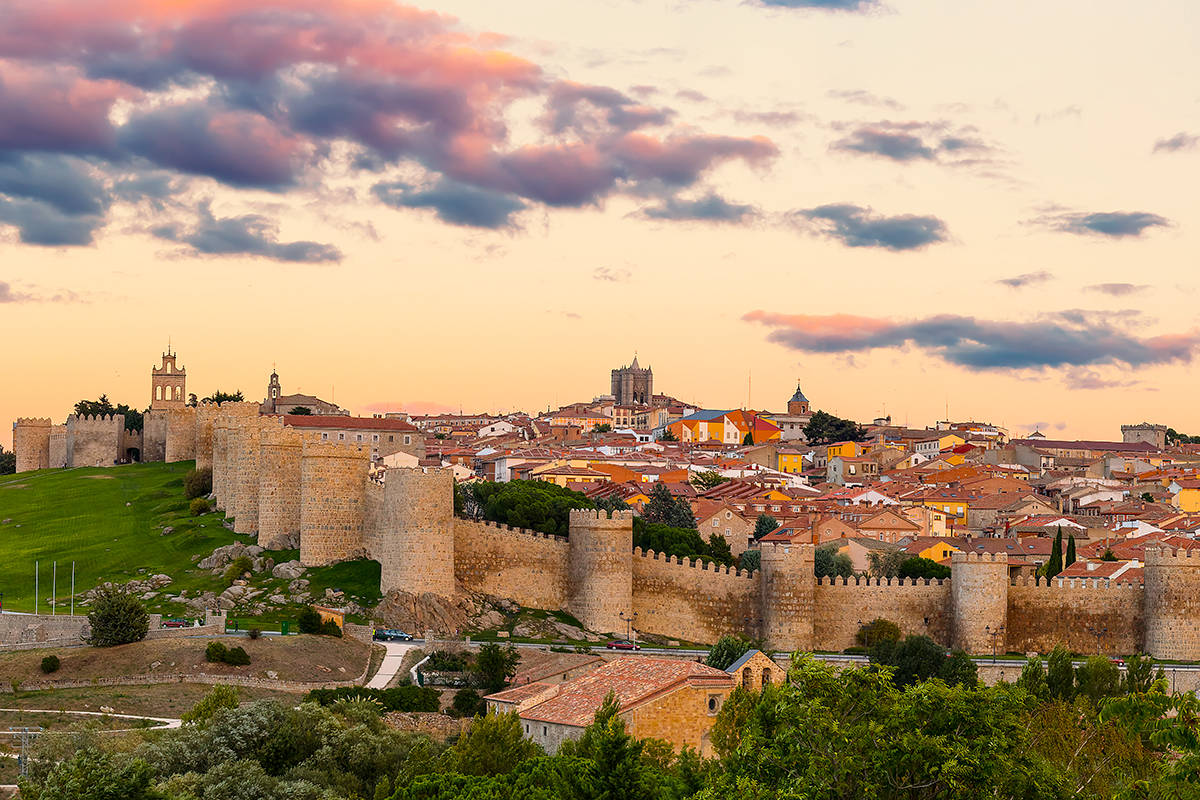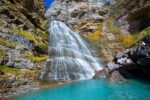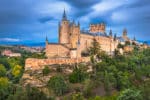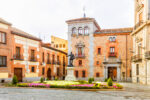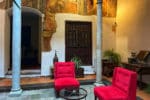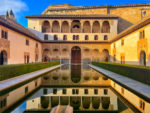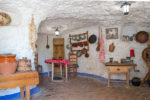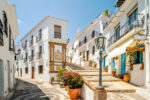Looking for things to do in Avila, Spain? Here is the guide to the best sites to visit and things to see in Avila in a day.
Avila is a perfectly preserved medieval town that is completely encircled by a stone wall. Its charming medieval ambience is safeguarded by the status of a UNESCO World Heritage site. Yet, despite its charm, it is not as well-known as Toledo or Segovia. And its quiet and unhurried pace only adds to its charm.
Lying only about 100 km northwest of Madrid, Avila makes for an easy and spectacular day trip. You can comfortably see most of Avila’s important sites in a day.
It takes about 1.5 hours to get to Avila by either bus or train from Madrid (more details at the end of the post). Or you can join an organized tour from Madrid. The tour typically combines Avila with Segovia, which makes for a spellbinding day of medieval walls and castles, and Roman aqueducts.
.
If you have your own set of wheels, but don’t want to stray too far from Madrid, Segovia and Avila would make for one of the most spectacular road trips in Spain.
If you are visiting Spain in winter, keep in mind that since Avila lies over a kilometre above sea level, it is considerably cooler than Madrid, and the city may be covered by a blanket of snow.
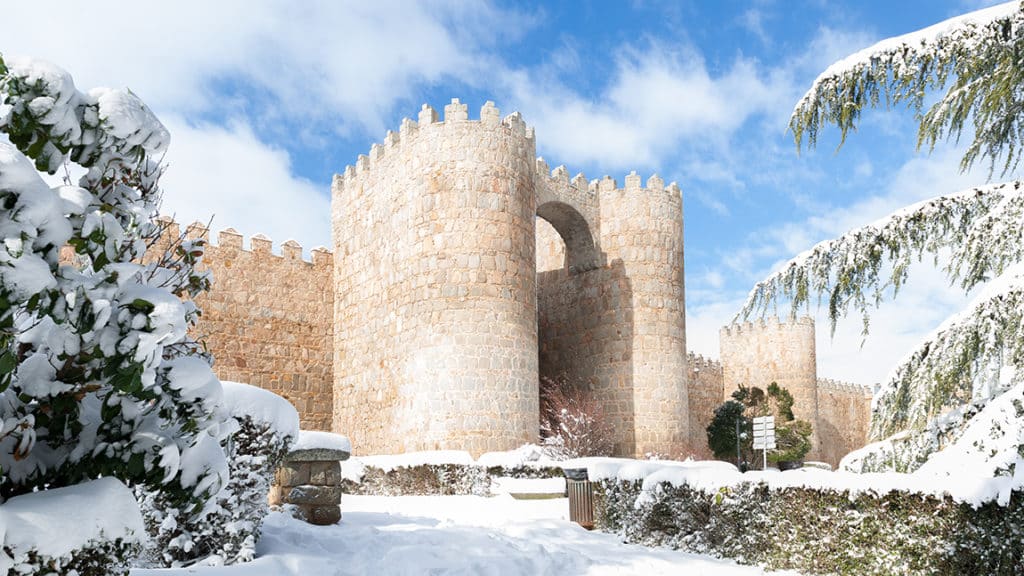
Things to Do in Avila
Avila is a relatively small town. About 6,000 people live inside the walled city, and another 51,000 live outside the walls.
The town has around 10 key sites: the Avila Walls, Basilica of St Vincent, Church of St Teresa, Avila Cathedral, Plaza del Mercado Chico, Church of St Peter, the Four Posts Lookout, Roman Bridge, Monastery of St Tomas (outside the city walls), and Avila museum. But if you try to fit them all in one day, it will feel rushed. It can be done, but it would be a list-ticking exercise rather than a travel experience.
Instead, I recommend slowing down and enjoying the town as it unfolds in front of you. Start your day with a cup of coffee at Yemas de Avila cafe next to the tourist office and get the lay of the land.
This guide is a list of my favourite things to do in Avila that you can easily fit in one day. Keeping in mind that the last bus and train depart for Madrid shortly after 6 pm (Check the schedule here)
Avila Walls
Avila is all about the city walls. These incredible 2.5-kilometre-long fortifications are punctuated by 82 towers and more than 2,000 battlements. They have nine gates, with the Gate of St Vincent (Puerta de San Vicente) being the most impressive of the nine.
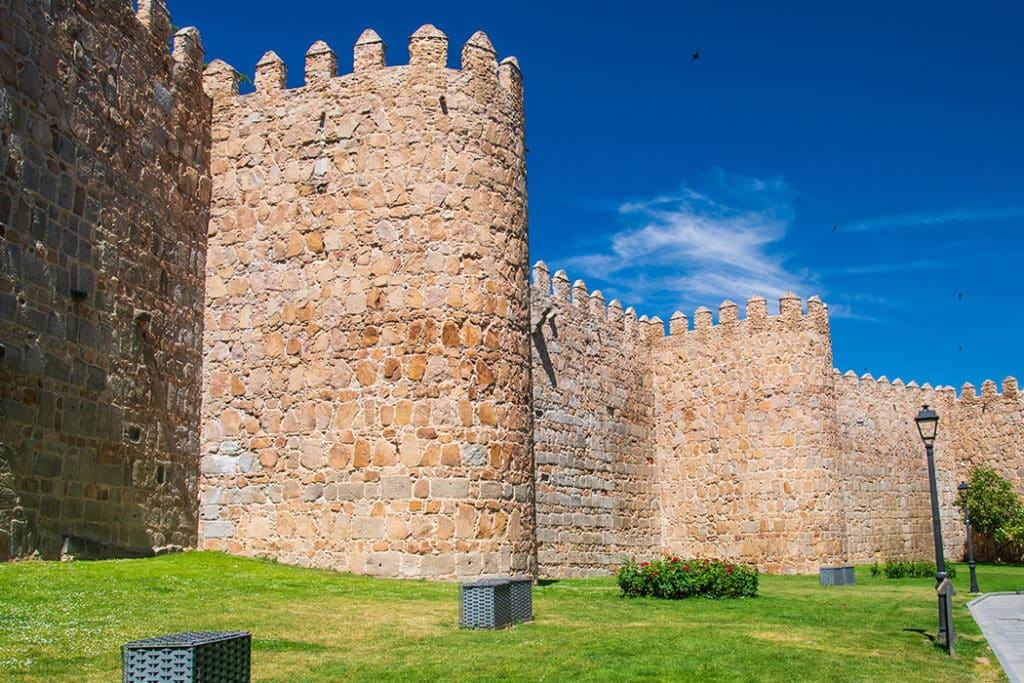
Completed between the 11th and 14th centuries, the walls look just like they did centuries earlier. They are 3 meters thick and 12 meters high, and the towers rise up to 20 meters.
Feel dwarfed by Avila walls
Start your explorations of Avila by walking along the base of the walls to enjoy the sensation of being dwarfed by them. You can walk about half the circumference of the city, but I’d recommend giving it about 30 minutes and then moving on.
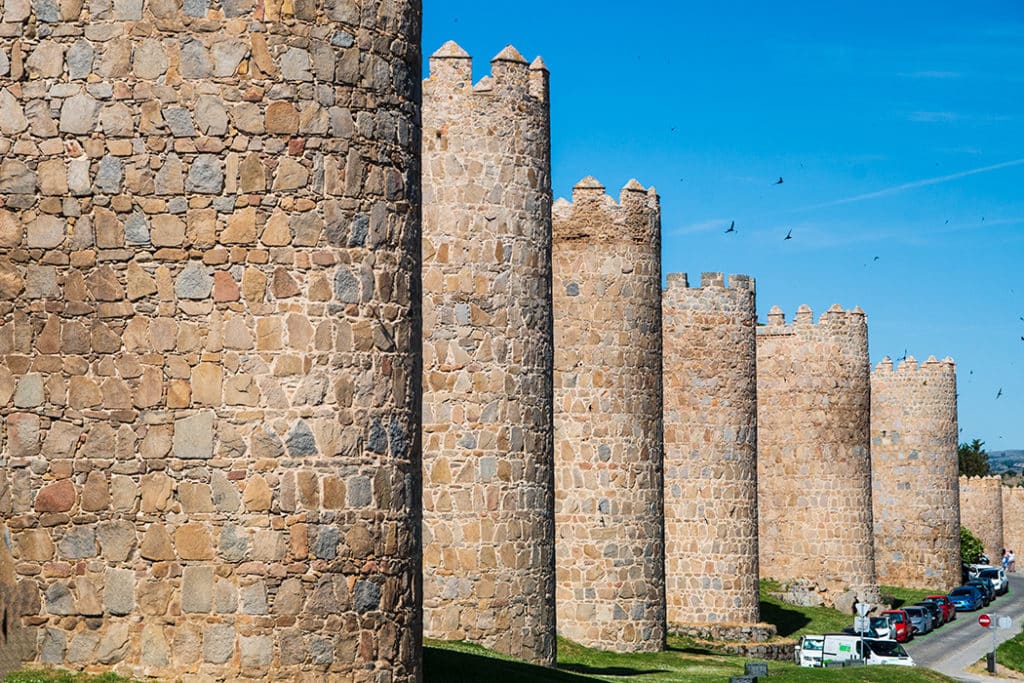
Walk along the top of the walls
As impressive as the walls look from the ground, they are just as magic from the top. You can climb to the top of the walls near the Gate of St Vincent where you purchase the 5 Euro ticket that gives you access to 1700 meters of battlement walkway along the top of the walls.
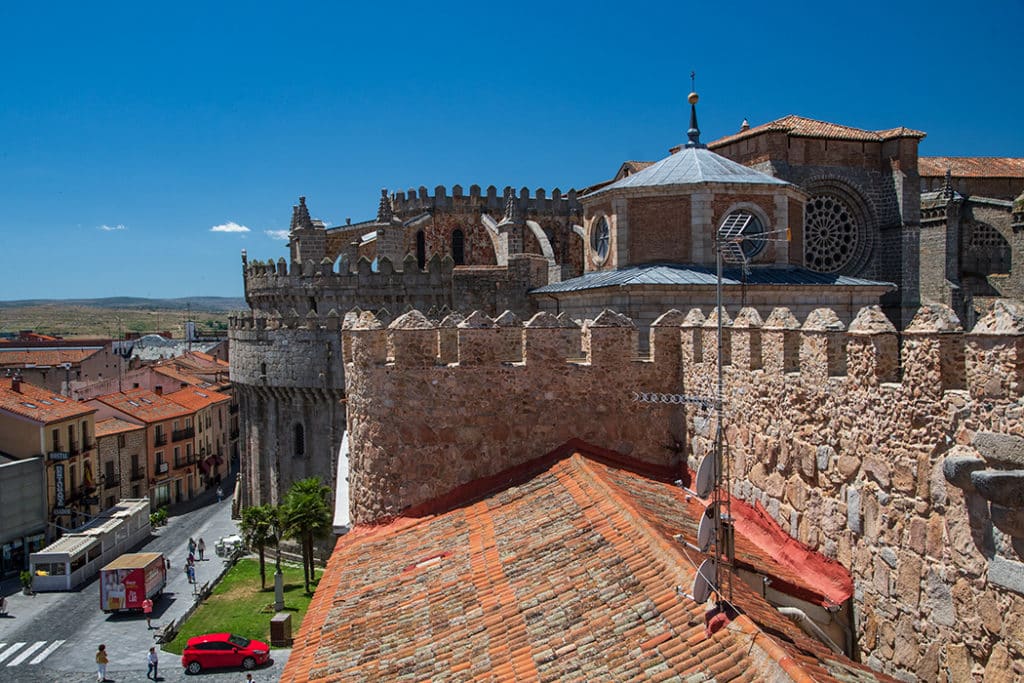
The views of the town from the wall are superb. On one side, Avila Cathedral is built right into the wall, on the other, a neat row of towers marches into the distance. Walking along the battlement walkway of the town wall is one of the unmissable things to do in Avila, however many days you spend in town.
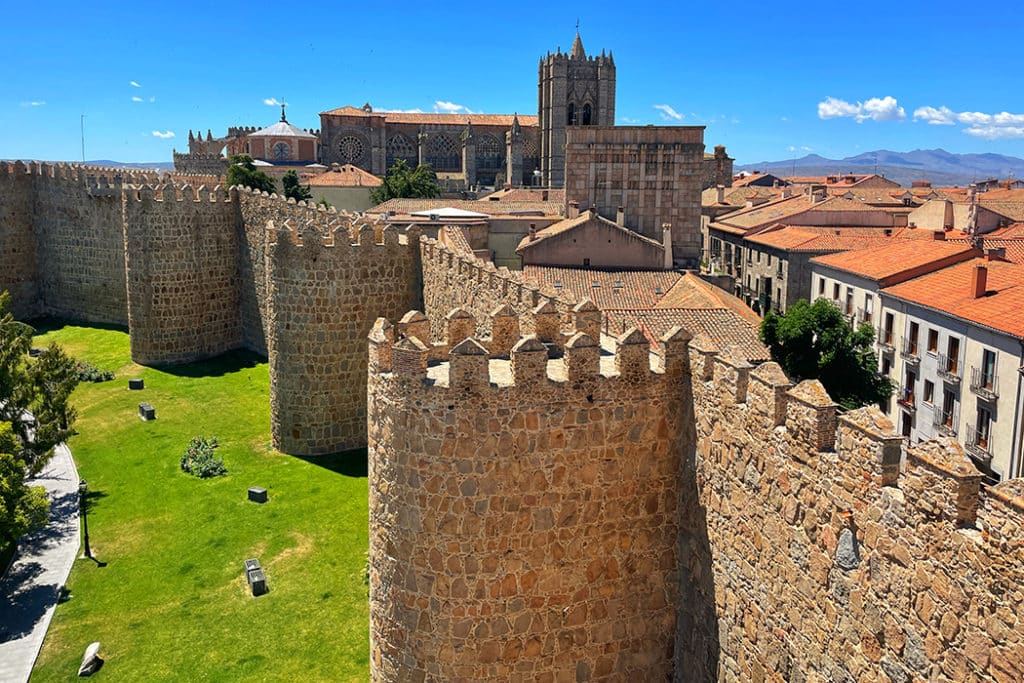
A corner tower gives fantastic views of the boxy Romanesque Basilica de los Santos Hermanos Mártires, Vicente, Sabina y Cristeta or Basilica of St Vincent.
Basilica of St Vincent
The reason this Basilica has such a long name is that it’s dedicated to three brothers: Saint Vicente, Sabrina and Cristeta – who were martyred during the reign of the Roman Emperor, Diocletian.
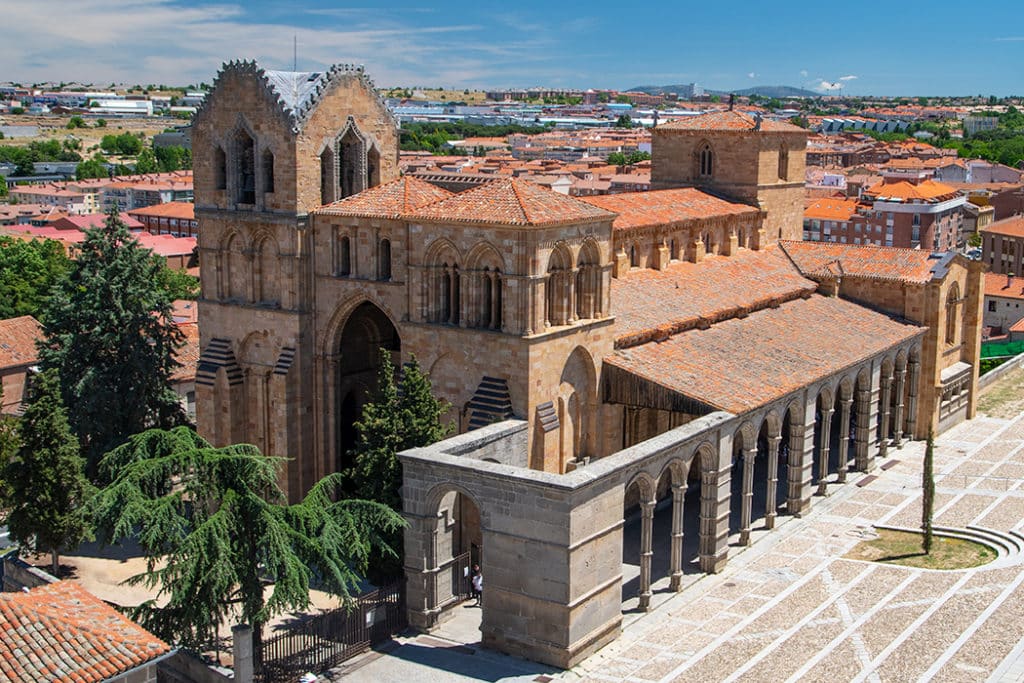
When you walk into the basilica, before looking at anything else, head straight to the crypt down the stairs. Once there, walk into the back room to see a hole in the wall just under its low ceiling.
As the story goes, the Roman authorities cracked down on the three brothers for practising the Christian religion. They fled the city but were betrayed by a certain jew who reported them to the Romans. The brothers were caught and brutally tortured. Their bones were broken by medieval torture machines. Then their heads were crushed. And while they were still alive, their bodies were dropped into a hole in the ground.
After the execution, the jew was overcome by guilt and went to the hole where the bodies of the brothers still lay. There he got bitten by a snake and promptly heard the voice of God. The Jew repented and was so filled with guilt and shame that he started building the basilica around the hole with his bare hands. That hole in the ground is the hole under the ceiling of the basilica’s crypt.
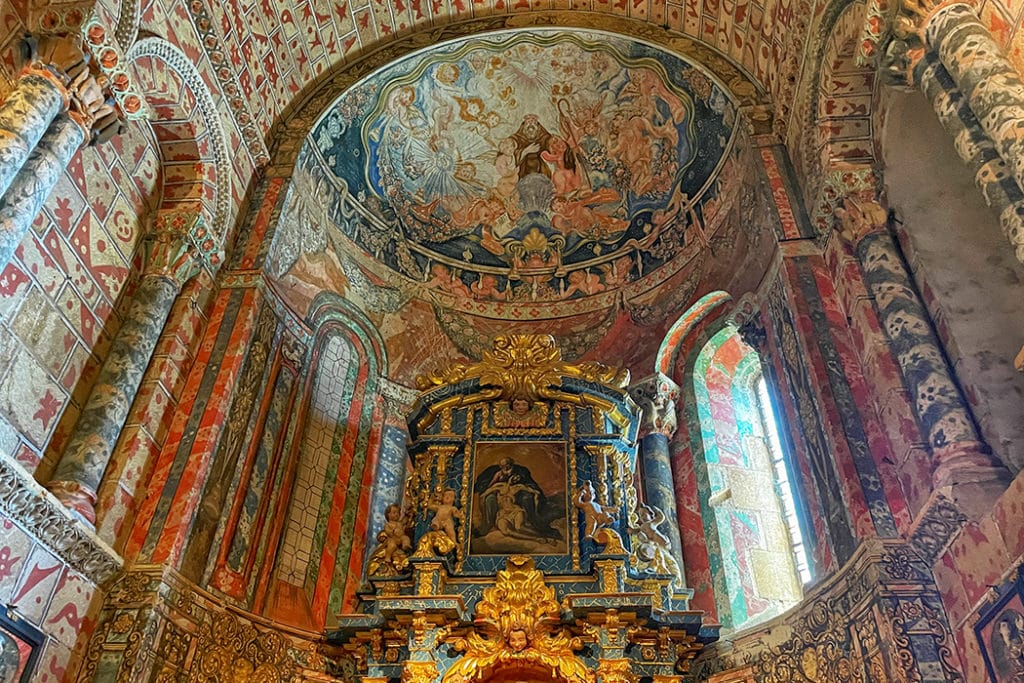
On the main floor of the Basilica, the Cenotaph of Saints Vicente, Sabina and Cristeta presents the story of the brothers in a visual form – carved on a colourfully painted wooden block.
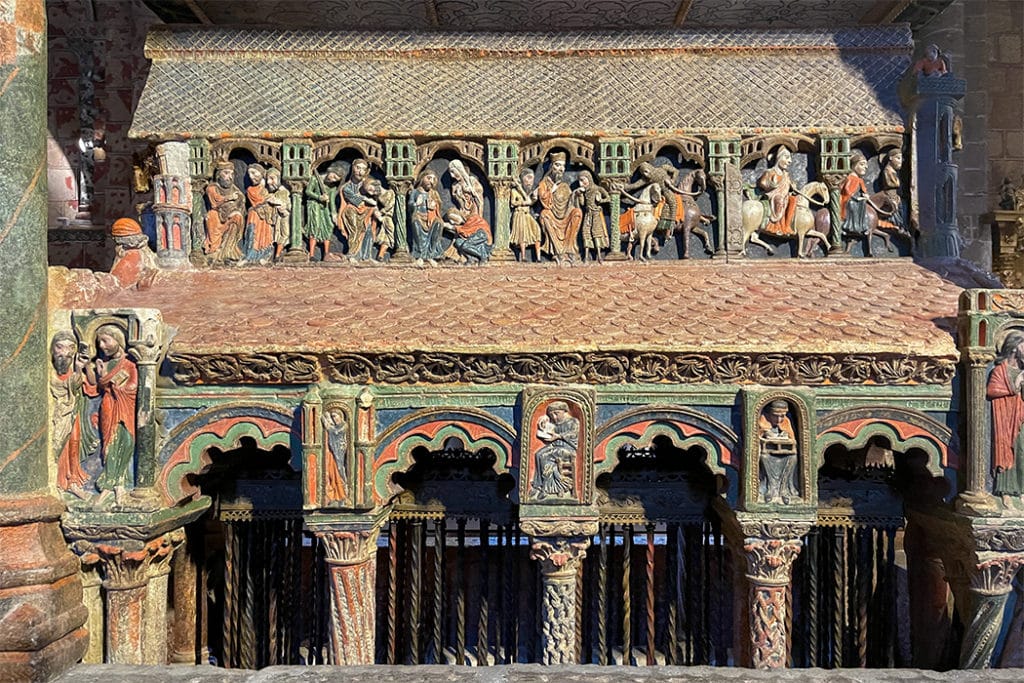
The rest of the Basilica (and much of Avila) is all about St Teresa of Avila – the founder of the order of Discalced Carmelites, colloquially known as Barefoot Carmelites.
As a young nun, Teresa was dissatisfied with the lack of spiritual devotion in the order of Carmelites. One day she famously took off her shoes in the Basilica of St Vincent, left the convent of Carmelites and began her walk of 500 km across Spain, convincing people to join her ‘order’ of true believers – the Barefoot Carmelites.
It may not seem like such a heroic deed, but for a woman in the 1500s, declaring that she hears the voice of Jesus was a risky undertaking. Inquisitors executed women as witches for less outrageous claims.
Yet, several medieval ladies founded their own orders. In Italy, there was St Clare of Assisi who founded the order of Poor Clares.
Follow the footprints of St Theresa
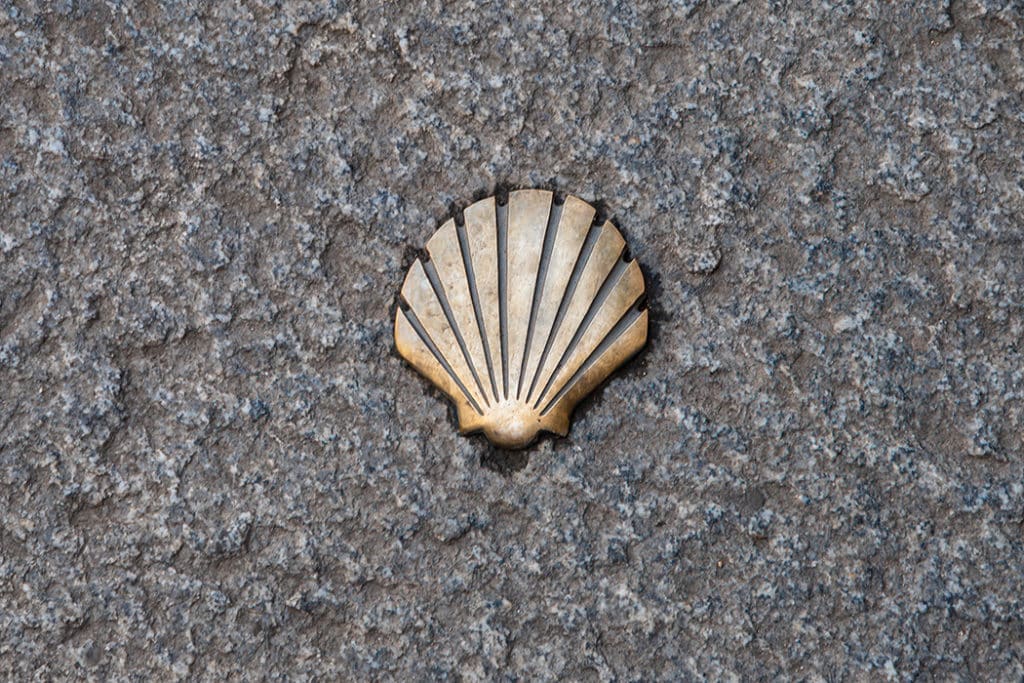
Today, pilgrims and tourists can follow the “footprints of St Theresa” route (Camino Teresiano), which passes through seventeen cities where she founded convents of Barefoot Carmelites. The route is marked on the pavement by shell symbols that look misleadingly like the logotype of Shell – the petrol conglomerate. The best place to begin this route is at the famous St Teresa of Avila church (more details in the old town section).
What is Teresa of Avila Famous For?
Teresa of Ávila was the first of only four women to have been named doctor of the church – a title awarded to saints whose doctrinal writings have special authority in the Catholic church.
Teresa is also known for her experiences of religious ecstasy accompanied by mystical visions. In one of her visions, she saw an angel with a spear with a golden tip. The angel pierced Teresa’s heart and instead of pain, she felt mystical ecstasy.
Teresa’s ecstasy was immortalized by the 17th-century Italian sculptor, Giovanni Lorenzo Bernini in the famous sculpture, Ecstasy of Saint Teresa, which you can see in the church of Santa Maria Vittoria in Rome.
Avila Old Town
Now it’s time to walk into the walled town itself. From the Basilica, walk through the imposing gate of St Vincent’s and wander the streets of the old town of Avila.
See the Celtic bull
Almost straight away you will come across a 2,500-year-old Celtic statue of a bull (Verraco de Muñogalindo).
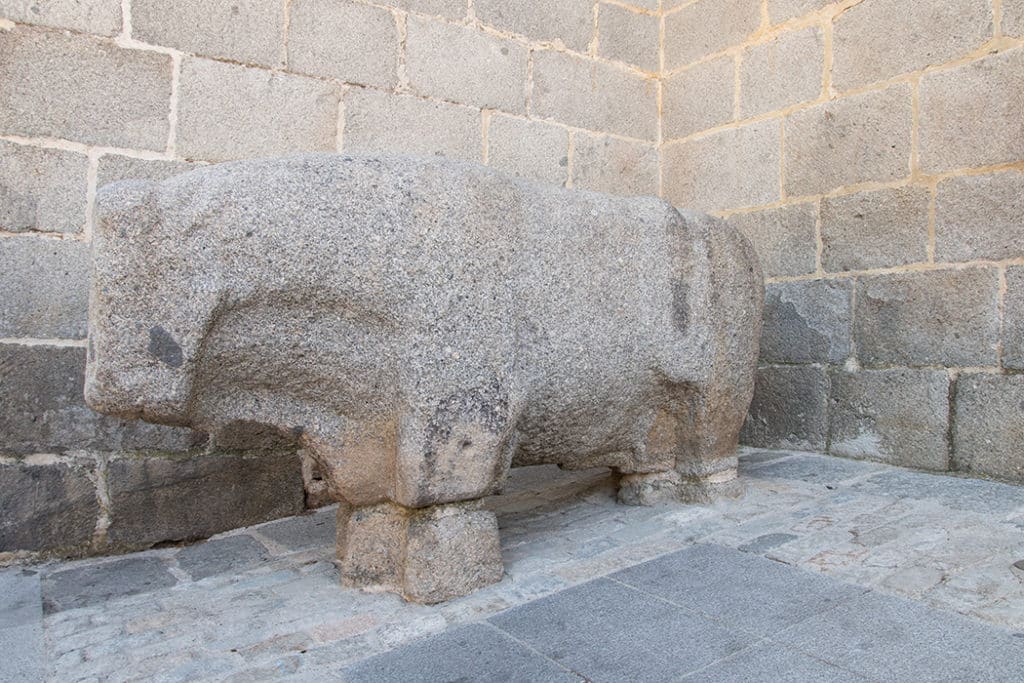
Get a glimpse of Roman Avila
Celts were some of the earliest inhabitants of Avila. Later came the Romans and absorbed or ‘romanized’ the Celts. Avila wasn’t an important Roman city, so there aren’t many Roman relics here. But if you are keen on all things Roman, you can see a beautiful Roman sculpture of Triton and Nereida from the 3rd century BC in the Avila Museum (Museo de Avila)
The Romans controlled the Iberian peninsula for 600 years. So when Christianity became the official religion of the Roman Empire in 380 AD, Hispania became a Christian province.
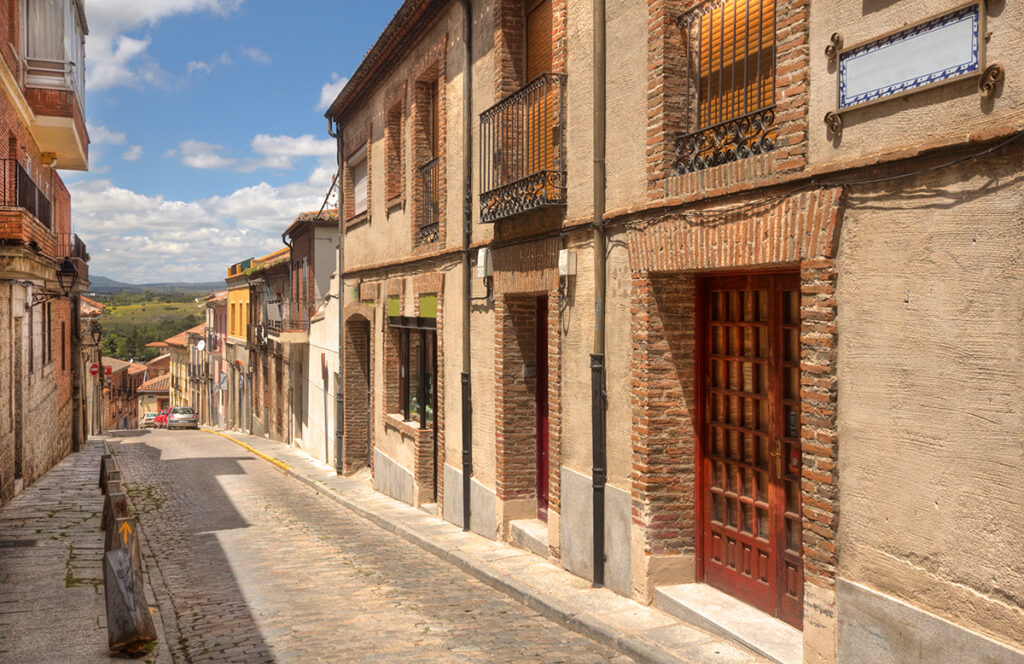
However, in 711 AD, just as Christian power structures were shaping up on the Peninsula, it was invaded by the Arabs. And so the Christian monarchs spent the next 800 years constantly fighting with Arab armies for control of their regions. Yet it is thanks to the Arab conquerors that Spain has such extraordinary sites as the Mezquita of Cordoba and Alhambra of Granada.
Avila was finally re-conquered in 1088 by Raymond of Burgundy, who commissioned the construction of a stone frontier town and built the walls that still stand today.
Relax on Plaza del Mercado Chico
As you stroll along Avila’s medieval streets, make your way to Plaza del Mercado Chico, which lies in the heart of the Old Town. The square is framed by arcades on three sides and the church of San Juan Baptist on the fourth. It is these arcades that remind people of Plaza Mayor in Madrid, but if you hear references to Plaza Mayor in Avila, they refer to Plaza del Mercado Chico.
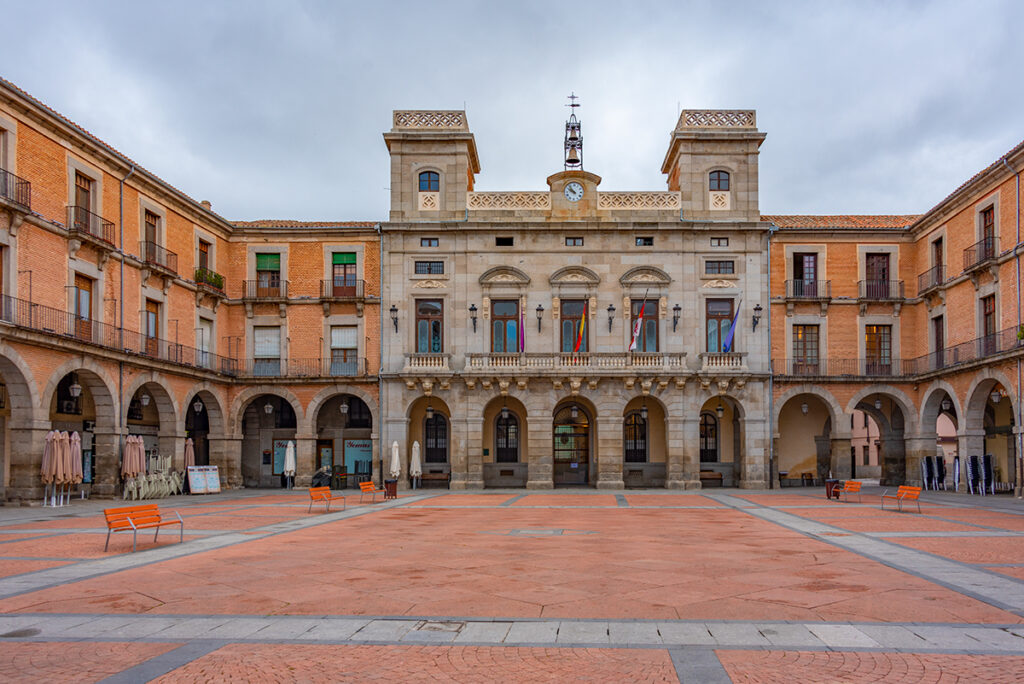
Another interesting building at the plaza is the Avila Town Hall.
There are also many cafes and restaurants in this square, and by now, you are probably ready for lunch. This is a great spot for a break and some yummy tapas.
Try Avila’s gastronomic specialty
Avila’s culinary specialty is Chuletón de Ávila – a large steak produced from the local breed of cattle. It is prepared on a grill and usually served rare. It is a little pricey, but it is a large meal.
If you don’t eat meat or don’t feel like a large stake, make sure to try Yemas de Santa Teresa for dessert. They are traditional sweets from Ávila made of egg yolks and sugar. Yemas is a very famous snack, found all over Spain. So if you are going to try them, may as well have them in their place of origin. They are sold in boxes of at least six, which makes them great for sharing.
Visit the Church and Monastery of St Teresa
Built by the order of Barefoot Carmelites in the early 17th century, the Iglesia-Convento de Santa Teresa is the primary shrine of St. Teresa in Avila. It was built over the house where St Teresa was born, and there is a room – The Chapel of Birth, inside the church where St Teresa’s bedroom has been preserved.
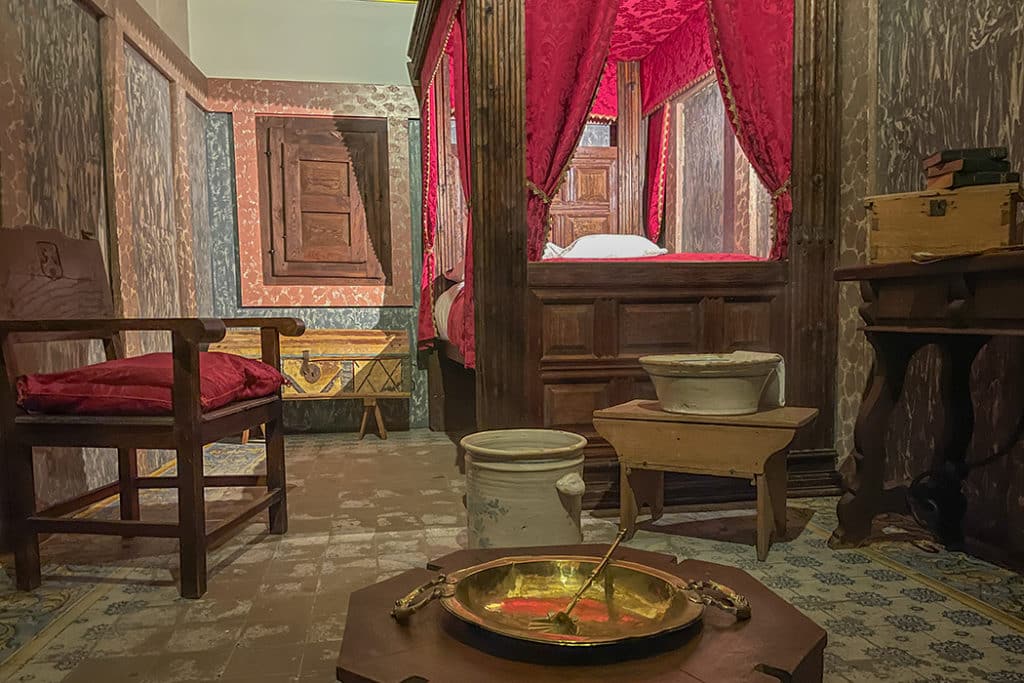
The church is quite pretty, with many stained glass windows and numerous shrines or alters of St Teresa. You can see that it is very much a living church, frequented by the followers of St Teresa, not just by the day trippers from Madrid.
The chapel of St Teresa, with its ornamental ceiling, is absolutely gorgeous and definitely worth a visit.
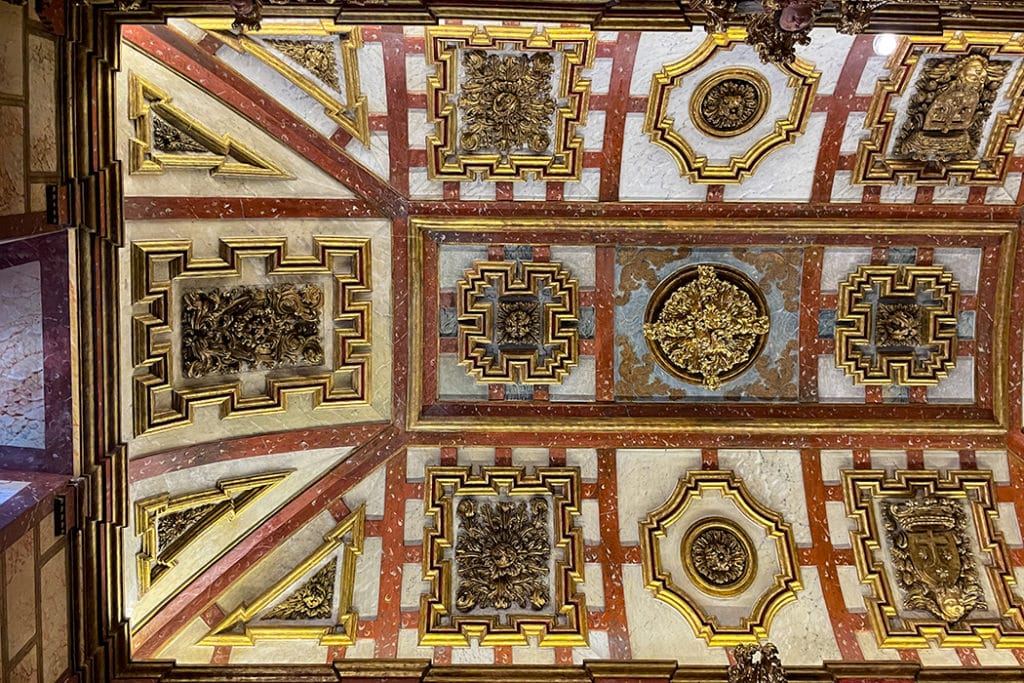
The chapel next door houses various relics associated with St Teresa: the sole of one of her sandals, the cord she used for self-flagellation and… a finger from her right hand!
The square outside the church, Plazza de Santa Teresa, is filled with many benches, and there is a cute statue of St Teresa perched on one of them.
Drop by the Church of St Peter
Right here on Plazza de Santa Teresa, there is a stunning Romanesque church of St Peter (Iglesia de San Pedro), known as “El Grande” by the locals. Built between the 12th and 13th centuries, this church has a solid late Romanesque facade and Renaissance-style interior, added later.
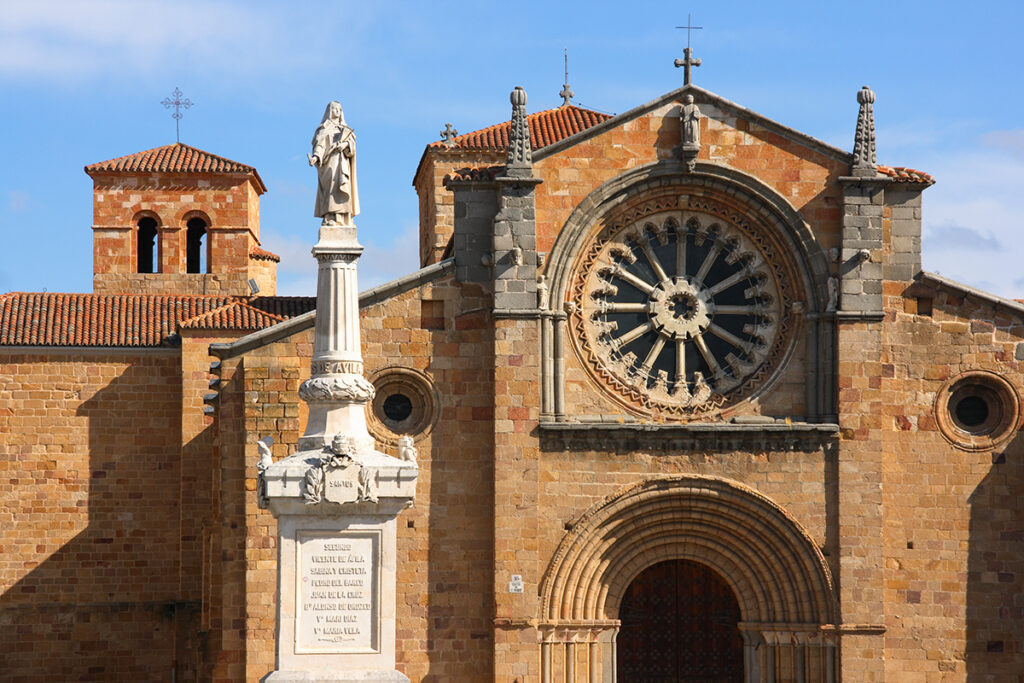
It is a bit of the luck of the draw when the church is open. But if you chance on it being open, wander in. There is an excellent audio tour available if you have the time.
Walk through the gate of St Teresa
Directly across the square and the church of St Teresa is another monolithic gate in the town wall – the Gate of Santa Teresa (Puerta de La Santa Teresa). Walk through it – it looks even more impressive from the outside. Unlike the round towers of the Gate of St Vincent, at this gate, the towers are square.
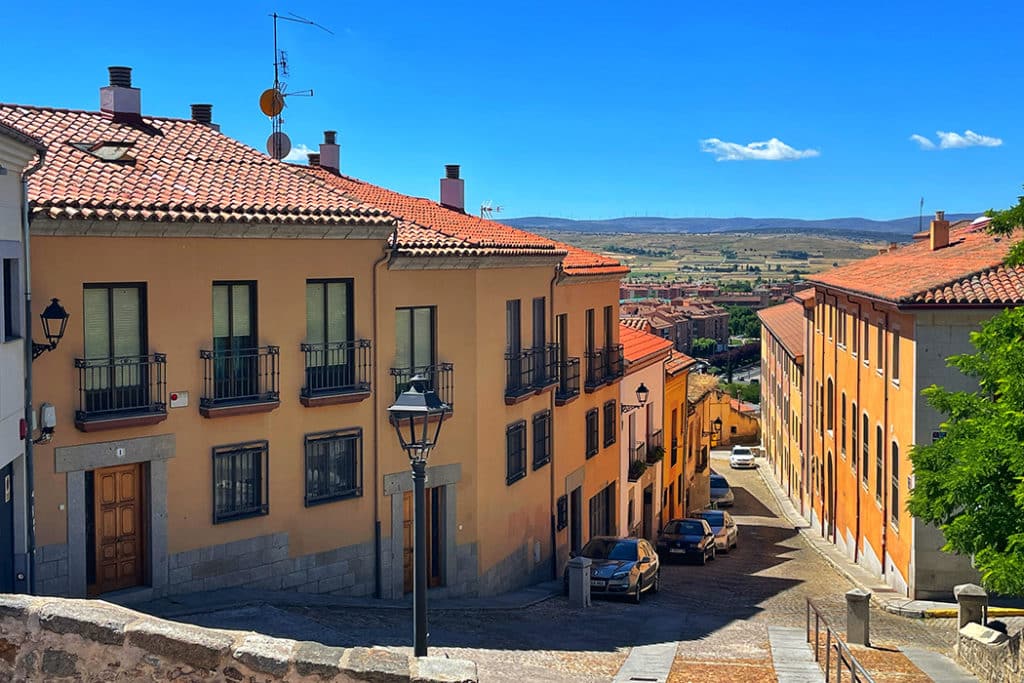
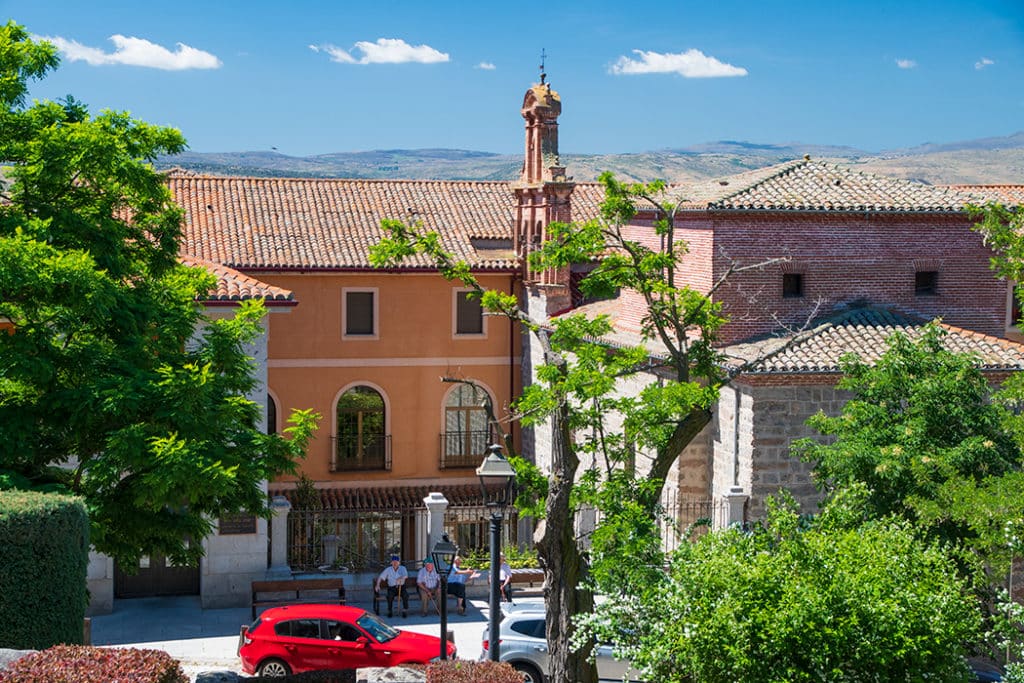
Just beyond the gate, a very picturesque street leads down the hill towards the open countryside. It’s a lovely street for a stroll if you are keen to venture out for a bit.
Visit Avila Cathedral
Another must-see monument in Avila is the Avila Cathedral. Commissioned in the 11th century, the original structure was built in the Romanesque style before the Gothic style arrived in Spain.
Avila Cathedral is not a typical cathedral. It was built as a fortress cathedral, with its eastern apse forming part of the town walls. You would’ve seen that section from the top of the wall.
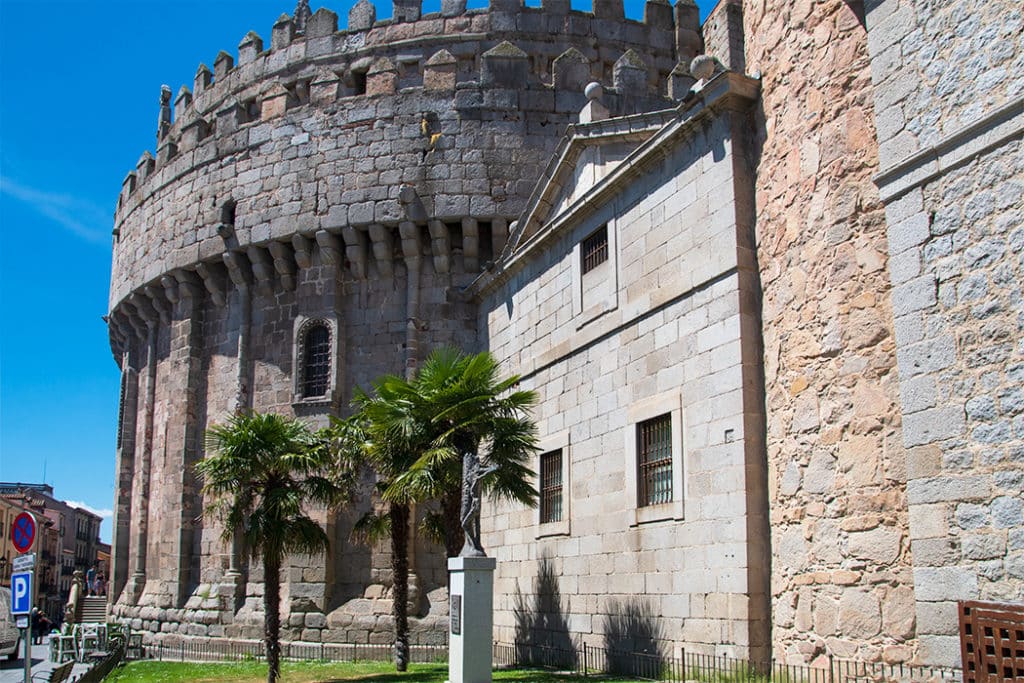
As you would expect, the cathedral is a monumental and imposing building. As the seat of the bishop and representation of the divine power, it had to be. And as the power of the Catholic Church grew, the original Romanesque structure was expanded over the centuries and given a more Gothic appearance.
As a result, the exterior of the building looks like it was put together in a hurry. It feels lopsided because it was actually never finished – the second tower was never built.
The stones used in the walls of the cathedral also betray the different stages of construction. The earlier Romanesque parts were built from red-and-white “blood” limestone, and for the later, Gothic parts, pure white stone was used.
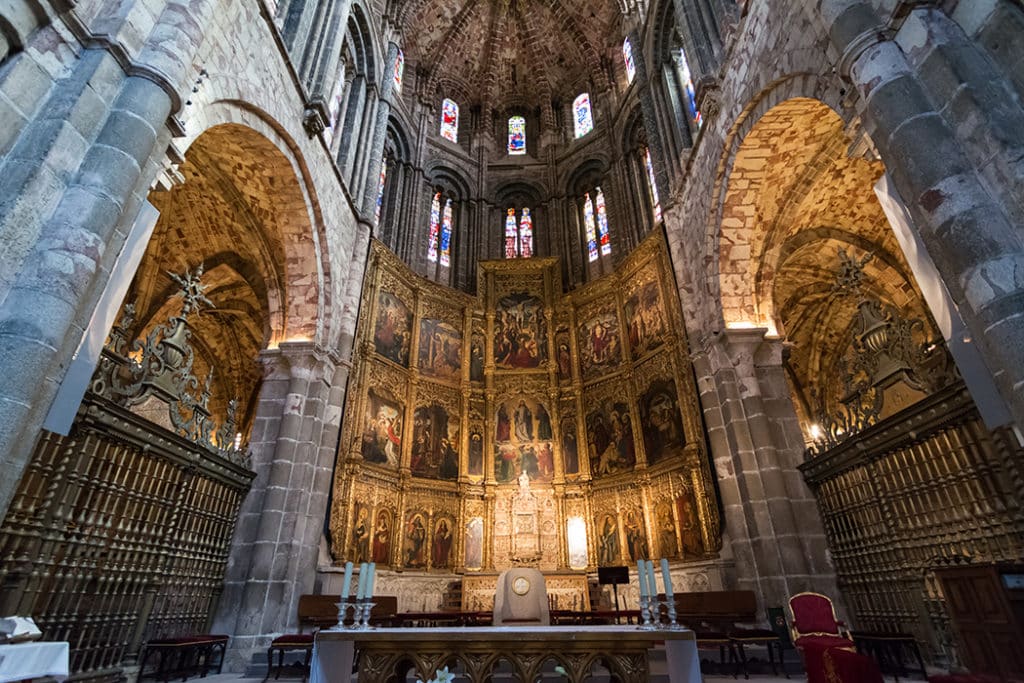
The interior of the cathedral was intended to dwarf its visitors in the face of divine power. The strikingly high vaulted ceiling, supported by Gothic arches, achieves this effect quite well. The beautiful stained glass windows in the cathedral are also much larger than those in the Church of St Teresa.
See the panoramic view from Four Poles Lookout
In the late afternoon, you could either visit some of the churches outside the town walls or visit the Four Poles lookout (Los Cuatro Postes) to get a sweeping view of the walled town.
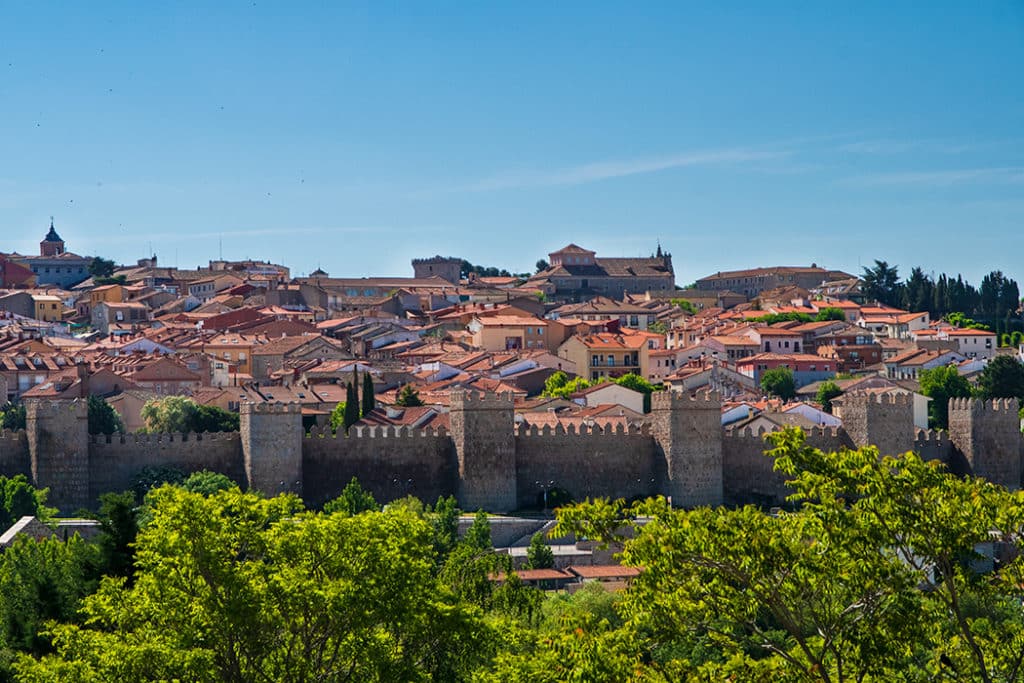
The lookout is located about 2 kilometres out of town, on the left bank of the Adaja River, so you might like to take a bus. Public bus 3 will take you to the lookout, and then you can take it all the way back to the bus or train stop for the trip back.
The lookout sits on top of a hill and consists of 4 monolithic columns joined together by a beam bearing the city’s coat of arms and a granite cross in the centre.
Personally, I didn’t find the structure that interesting, but the view of Avila from here is spectacular.
You could also start your day at the Four Poles (instead of finishing it here), but the light is generally better in the afternoon.
Roman Bridge
If you choose to walk to the lookout, it’s less than 20 minutes from Plaza del Mercado Chico. The perk of walking is that you’ll cross the Roman bridge of Avila (Punte del Adaja) on the way. While the current bridge dates to medieval times, the original structure was built by the Romans.
Camino Teresiano
This is also the start of Camino Teresiano, so you will be walking in St Teresa’s footsteps, along one of Spain’s most important pilgrimage routes. Just imagine – walking through a medieval city gate, crossing a medieval stone bridge in the footsteps of a medieval nun. You’ll forget what century it is!
How to get to Avila from Madrid
You can reach Avila from Madrid ever by train or bus. The train leaves from Atocha station approximately every 30-60 minutes and takes between 1.5 and 2 hours, depending on the type of train.
The bus leaves for Avila from Estación Sur – Méndez Álvaro and takes about 1.5 hours. Buses are not as frequent as trains, with the first service from Madrid at 9 am and the last service from Avila shortly after 6 pm. Check the bus and train schedules before making your plans.
In Avila, bus and train stations are located next to each other, and it is about a 15-minute walk (1.4km) to the town wall and the Basilica of St Vincent.
Avila Hotels
Parador de Avila
If you do decide to stay in Avila overnight, consider staying in Parador de Avila. The idea behind Parador Hotels is that they enable their guests to spend a night in a historic monument. And Avila is the perfect town for staying in a Parador hotel.
Avila Parador (Parador de Avila) is located in 16th-century palace steps away from the town wall and within a 5-minute walk of Convento de Santa Teresa and a 10-minute walk to Basilica de San Vicente.
The hotel exudes understated luxury with its high ceilings and gorgeous floor tiles and has its own archaeological museum in the garden!
La Casa del Presidente
Another gorgeous hotel right next to the town wall is La Casa del Presidente. This quiet and beautifully furnished hotel offers luxurious bathrooms to soak in during the colder months and a beautiful outdoor pool to cool off in summer.
This small boutique hotel reminded me of a stately home decorated with meticulous attention to detail. A very welcoming establishment.
Jaguar Apartment
If you prefer the privacy of your own apartment, you can’t beat Jaguar – a one-bedroom apartment 50 meters from the town wall. If having a cup of coffee on your own balcony within almost touching distance of the medieval wall sounds appealing, then this is your place.
The apartment has wooden floorboards, comfy furniture, a mezzanine level, and free parking. It would make the perfect writing retreat.
Is Avila Worth Visiting?
So is Avila worth visiting? Absolutely. An entire town encircled by perfectly preserved defensive walls is a rarity even in Spain. And the fact that you can walk along the battlements and get birds-eye-views of the town makes it even more special. It is a very atmospheric small medieval town that’s not overrun by tourists. And since Avila is so easy to reach from Madrid, it makes for an effortless and spectacular day trip.
More on Exploring Spain
- 15 Stunning Waterfalls in Spain to Add to Your Bucket List
- Alicante Old Town – The Charming Barrio Santa Cruz
- Watching Iberian lynx in Sierra de Andujar Natural Park, Spain
- 8 Amazing Things to Do in Segovia on a Day Trip from Madrid
- Discover Madrid Old Town: From the Moors to the Austrians
- Malaga Old Town: Where Romans, Moors and Picasso Meet
- 5 Gorgeous Hotels in Granada to Consider for your Next Trip
- Discover Moorish Granada in One Day on This Self-Guided Walk
- Sacromonte Caves: The Best-Kept Secret in Granada
- 17 Fabulous Weekend Breaks in Spain: Must-See Destinations and Hidden Gems

